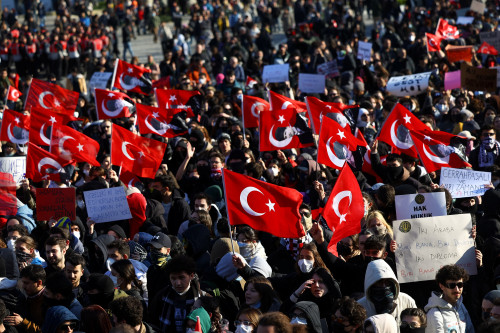By Stella Qiu
SYDNEY (Reuters) -Australia’s central bank chief on Wednesday stepped up a warning of more rate hikes ahead to temper rising price pressures, even as risk of a steep economic downturn heightens with data showing GDP expanded at its weakest pace in 1-1/2 years last quarter.
The Reserve Bank of Australia (RBA) surprised markets by hiking in May and again this week, after pausing a near year-long tightening cycle in April, with governor Philip Lowe saying the assessment of inflation risks has changed in the past few months, including upside surprises on wages, housing prices and persistently high services inflation.
“We have been prepared to be patient… but our patience has a limit and (inflation) risks are starting to test that limit,” Lowe said in a speech at the Morgan Stanley Australia Summit in Sydney, a day after the central bank raised the benchmark cash rate a quarter point to an 11-year high of 4.1%.
“We couldn’t just sit idly and say well this is just all accidental. It’s all just noise.”
The Australian dollar hit a three-month high of $0.6690 and three-year government bond yields climbed 5 basis points to a five-month high of 3.702%, adding to the 12 basis points gained on Tuesday.
Lowe reiterated that further tightening may still be required to bring inflation to heel, with some analysts now expecting rates to peak at 4.6% while Goldman Sachs is picking 4.85% – well above a 4.35% peak projected by many banks.
The RBA has projected headline inflation – which is at about 7% now – to return to the top of the bank’s target of 2%-3% by mid-2025, a slower path than many other economies as Lowe wants to preserve strong gains in the labour market.
However, the RBA chief said that “the desire to preserve the gains in the labour market does not mean that the Board will tolerate higher inflation persisting,” raising the risk of a hard landing for the economy.
Gross domestic product (GDP) data earlier on Wednesday showed the Australian economy expanded 0.2% in the first quarter, its weakest pace since the third quarter 2021 when COVID lockdowns paralysed activity. That missed analysts’ forecast of 0.3% growth.
PRODUCTIVITY, PRICE CHALLENGE
Price pressures have led the RBA to raise its cash rate by 400 basis points since last May, the most aggressive tightening campaign in its modern history.
Markets now see rates are almost certain to reach 4.35% by September, and a hike could come as soon as next month.
That could further hamper drivers of economic growth.
In the last quarter, for instance, GDP growth was underpinned by business investment, which analysts expect to slow from here. Also, Australian consumers, squeezed by high costs of living and rising interest rates, have cut back on discretionary spending, making just a 0.1 percentage points contribution to first quarter GDP growth.
“On the face of it, that would suggest the RBA could well take its foot off the brake. However, we’re not convinced,” said Marcel Thieliant, a senior economist at Capital Economics.
“Dismal productivity gains raise the risk that the RBA will have to raise interest rates above the 4.35% peak we have pencilled in.”
A productivity measure showed GDP per hour worked fell 0.3%, while compensation of employees (COE), the broadest measure of economy-wide labour costs, increased 2.4% in the first quarter, after a rise of 2.0%.
On Wednesday, Lowe elaborated on four areas that the board would be paying close attention to in upcoming policy decisions – global economy, household spending, growth in unit labour costs and inflation expectations.
Services price inflation remained high, with rents rising quickly and electricity prices set to increase further, while unit labour costs are rising briskly without a pickup in productivity, and medium-term inflation expectations could start to shift higher, said Lowe.
“It is in Australia’s interest that we get on top of inflation and we do so before too long. The Board will do what is necessary to achieve that.”
(Reporting by Stella Qiu; Editing by Himani Sarkar & Shri Navaratnam)





